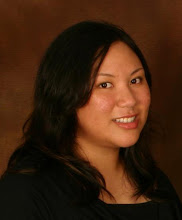For Language Arts, the entire school uses a curriculum called Story Town by Harcourt Brace. The year long curriculum is divided into themes and each theme has 5 lessons with stories and a ton of activities to go along with them. One of the activities includes Building Robust Vocabulary that comes with each story. Since I was also teaching Language Arts as part of my practicum, I had to deal with vocabulary. The good thing about Story Town is that they don't give a lot of words for each lesson. At most there are 8 words per story, but usually around 5 or 6. So it's easier for the students to learn the new words and then actually use them in their writing or speaking. To help with having the students use their new vocabulary, I started an activity that ties in with their classroom management plan.
Ms. Corin has started using a classroom economy with the 5th graders. They have a bank book and they write in credits for good behavior, finished homework, and other good deeds and they get debits if they misbehave and don't finish their homework. At the end of two weeks, Ms. Corin opens a store where the students can shop using their accumulated money.
I told my students that if they can find an example of the vocabulary word in the "real world", I will "pay" them a "dollar" per word. Examples can come from books (other than the textbook, of course!), television, movies, internet, newspapers, and even from people using them. We also talked about the significance of this activity.
At first, the response was pretty slow. Only a few girls brought in examples. But when the other students saw how much "money" they were "making," they started bringing in examples too. When a student used a vocabulary word while speaking, I allowed the first student who heard it to add a dollar. I also gave the speaker a dollar for using the word. Eventually, I would have liked to create a poster with the samples.
I felt that this was a fun and effective way to have students use their new vocabulary. It's something I'll definitely use in my future classroom. Take a look at some samples my students brought in.





.JPG)
.JPG)













